Step Back in Time: The Historical Significance of Peng Dehuai’s Former Home
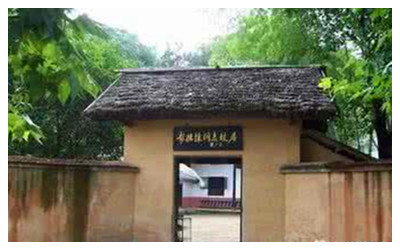
An Essential Guide to Visiting Former Residence Of Peng Dehuai
In This Guide
- An Essential Guide to Visiting Former Residence Of Peng Dehuai
- The Rich History and Legends of Former Residence Of Peng Dehuai
- Main Highlights: What You Absolutely Can’t Miss
- Planning Your Visit: A Practical Guide
- Tickets: Prices, Booking, and Tips
- How to Get There: A Complete Transportation Guide
- Local Cuisine and Accommodation Nearby
- Frequently Asked Questions
- Final Thoughts on Your Trip
The Former Residence of Peng Dehuai, nestled in the picturesque village of Wushi in Xiangtan County, Hunan Province, is a site steeped in the rich tapestry of Chinese history. This charming traditional folk house, originally built in 1925 and known as Sanhua Hall, offers a unique glimpse into the life of one of China’s most significant military leaders and a key figure in the Communist Party during the tumultuous 20th century.
As you approach the residence, you’ll find it surrounded by the natural beauty of Wushi Peak, creating an atmosphere that speaks to both history and tranquility. The site is not merely a house; it embodies the spirit of resilience and dedication that characterized Peng Dehuai’s life. Born in 1898 to a humble farming family, Peng rose through the ranks to become a marshal in the People’s Liberation Army and the Minister of Defense, playing a crucial role in significant historical events such as the Korean War and the Chinese Civil War.
Visitors to the residence will discover more than just architectural beauty. The site features the Peng Dehuai Memorial Hall, a bronze statue honoring his legacy, and the Ancestral Temple, all of which collectively narrate the story of a man who prioritized the welfare of the people over personal ambition. The residence was officially opened to the public in 1983 and has since been essential for understanding the complexities of modern Chinese history.
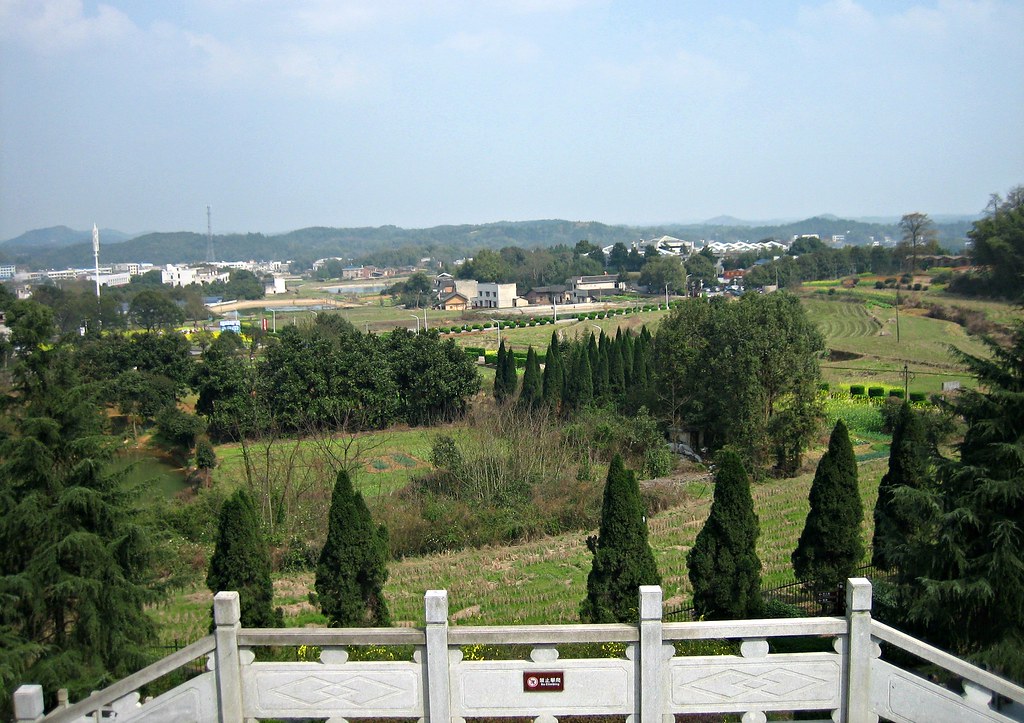
Former Residence Of Peng Dehuai.
Whether you’re an avid historian or simply curious about different cultures, a visit to the Former Residence of Peng Dehuai promises an enriching experience. Here, you will not only walk through the halls that once echoed with the aspirations of a young revolutionary but also immerse yourself in the broader narrative of China’s journey through war, reform, and recovery. As you explore this historical gem, you will leave with a deeper appreciation of the sacrifices made for the nation’s future—truly, a must-see for anyone interested in the profound impacts of history on contemporary society.
The Rich History and Legends of Former Residence Of Peng Dehuai
Nestled in the verdant hills of Xiangtan County, the Former Residence of Peng Dehuai stands as a poignant symbol of the life of one of China’s most significant military leaders. Constructed in 1925 and originally named “Sanhua Hall,” this traditional folk house not only serves as a historical site but also as a testament to the tumultuous times in which Peng lived and fought.
A Glimpse into History
Peng Dehuai, born in 1898, emerged from humble beginnings in Hunan Province. His early life was marked by hardship; he worked in coal mines and dams before joining the military at the young age of sixteen. Over the years, he rose through the ranks, ultimately becoming a key figure in the Communist Party of China and serving as the Defense Minister from 1954 to 1959. His military acumen was showcased during the Second Sino-Japanese War and the Korean War, where he commanded the People’s Volunteer Army.

Former Residence Of Peng Dehuai.
The residence itself was built during a significant period in Peng’s life, reflecting his ascent and the changing landscape of Chinese politics. After the establishment of the People’s Republic of China, Peng returned to his roots, living in this house for a time and later using it to host important military discussions.
Legends of Leadership and Resilience
The residence is not merely a building; it embodies the spirit of resilience and leadership. Peng Dehuai’s legacy is interwoven with stories of bravery and candidness. Known for his straightforwardness, he was unafraid to voice his opinions, even when they contradicted the prevailing political winds. This forthrightness earned him both loyal followers and fierce adversaries, particularly during the Great Leap Forward, where he famously criticized Mao Zedong’s policies.
Despite facing political persecution and being sidelined during the Cultural Revolution, Peng’s contributions were later acknowledged, leading to his rehabilitation in the 1980s. His former residence was restored, and in 1983 it opened to the public, symbolizing the gradual acceptance of his legacy within the broader narrative of Chinese history.
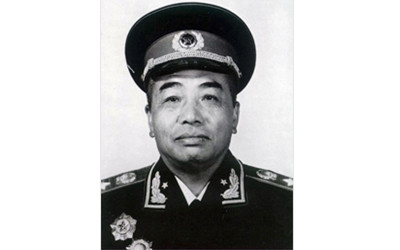
Former Residence Of Peng Dehuai.
Architectural Significance
The Former Residence of Peng Dehuai showcases traditional Hunan architecture, with its simple yet elegant design that speaks to the region’s cultural heritage. The complex encompasses several structures, including the Peng Dehuai Memorial Hall, a bronze statue commemorating his life, and the Ancestral Temple, offering visitors a comprehensive view of his life and achievements.
The site is part of a larger memorial park, which has been meticulously maintained to reflect its historical significance. It serves as a place of contemplation and remembrance, where visitors can connect with the stories of the past and the indomitable spirit of a man who shaped modern China.

Former Residence Of Peng Dehuai.
Visiting the Residence
A visit to the Former Residence of Peng Dehuai is not just an exploration of a historical site but an invitation to delve into the rich tapestry of Chinese history. Located near other revolutionary sites in Hunan, it forms part of a “golden triangle” of important historical landmarks, making it an essential stop for travelers seeking to understand the complexities of China’s past.
Visitors are encouraged to take time to wander through the grounds, reflect on the life of Peng Dehuai, and appreciate the serene beauty of the surrounding landscape. Admission is free, and the site is open to the public from 9:00 AM to 5:00 PM, offering a chance to immerse oneself in the rich history and legends that echo through the halls of this remarkable residence.
Main Highlights: What You Absolutely Can’t Miss
Visiting the Former Residence of Peng Dehuai offers a profound journey into China’s revolutionary history and the life of one of its most prominent military leaders. Nestled in Wushi Village, Xiangtan County, Hunan Province, this historical site is not only a gateway to understanding the complexities of China’s past but also a reflection of the cultural heritage of the region.
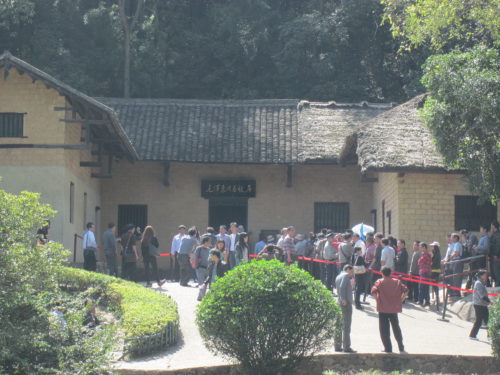
Former Residence Of Peng Dehuai.
Key Highlights You Can’t Miss
1. The Residence Itself
Constructed in 1925 and originally named Sanhua Hall, the residence is a classic example of traditional Hunan architecture. As you walk through its rooms, you can almost hear the echoes of history and the stories of the family who once lived here. The structure, with its modest yet charming design, serves as a reminder of Peng Dehuai’s humble beginnings.
2. Peng Dehuai Memorial Hall
Adjacent to the residence, the Peng Dehuai Memorial Hall is a must-visit. This hall showcases an extensive collection of artifacts, photographs, and documents that chronicle Peng’s life, from his early struggles to his rise as a key military figure in the Communist Party. The exhibits provide deep insights into his character, leadership style, and contributions to significant military campaigns, including the Korean War.
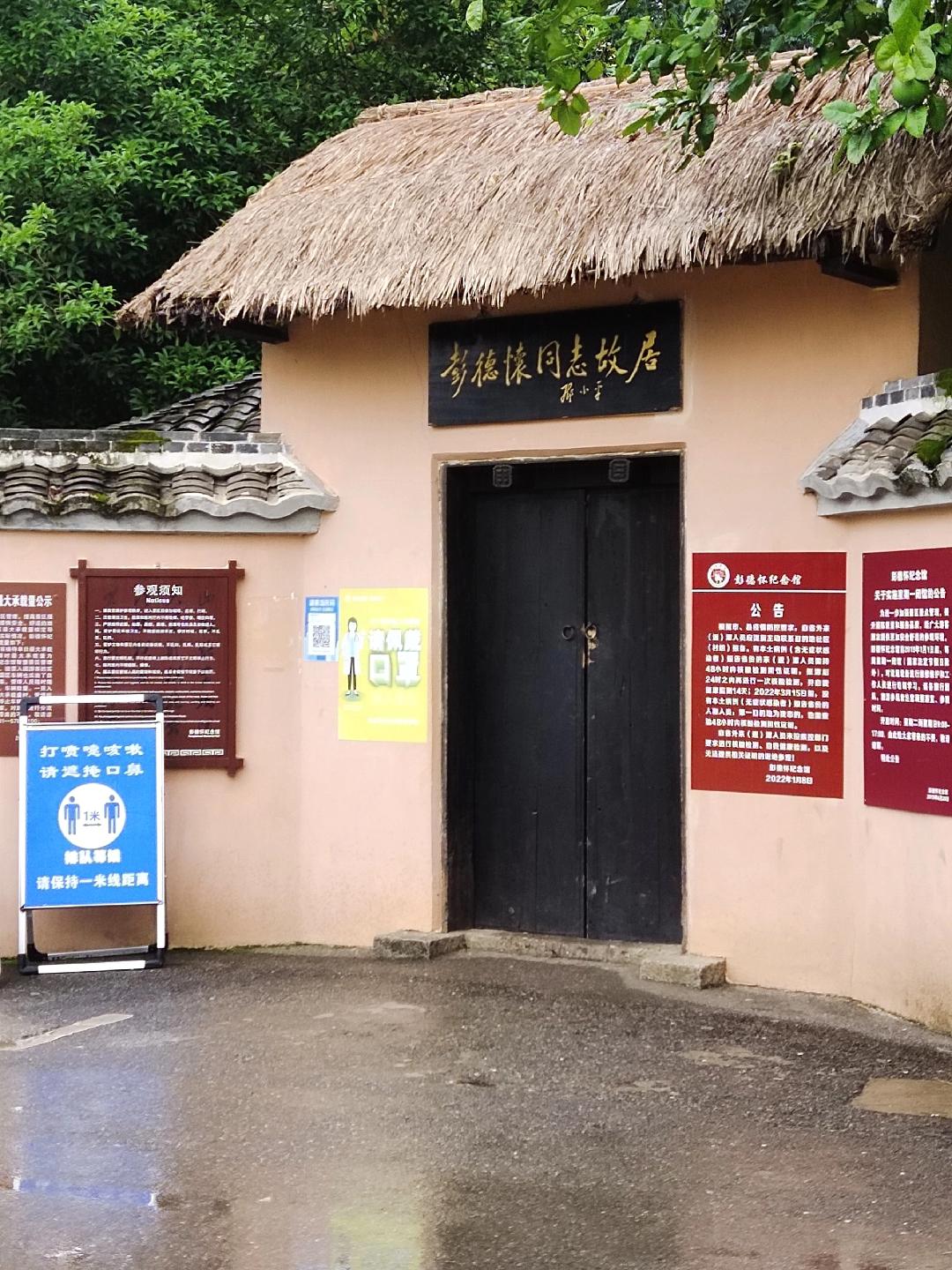
Former Residence Of Peng Dehuai.
3. The Bronze Statue
As you enter the memorial park, you will be greeted by a striking bronze statue of Peng Dehuai. This monument captures the general’s resolute spirit and serves as a focal point for many visitors who come to pay their respects. The surrounding park area is serene, offering a moment of reflection on his legacy.
4. Ancestral Temple (易华祠)
Just a short stroll from the main residence is the Ancestral Temple, which honors Peng’s family lineage. This site is imbued with cultural significance, reflecting the deep-rooted traditions of filial piety and respect for ancestors that permeate Chinese society. It’s a poignant reminder of the personal history that shaped this influential leader.
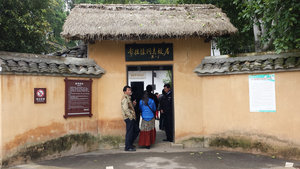
Former Residence Of Peng Dehuai.
5. Graves of Martyrs
Within the grounds of the memorial park lies the graves of martyrs who fought alongside Peng Dehuai. This solemn area pays tribute to those who sacrificed their lives for their country. It serves as a powerful reminder of the cost of war and the valor of those who fought for their beliefs.
6. Scenic Surroundings
The residence is set against the backdrop of Wushi Peak, providing a picturesque view that enhances the historical experience. Take a moment to enjoy the natural beauty surrounding the site, which adds to the reflective atmosphere of your visit.
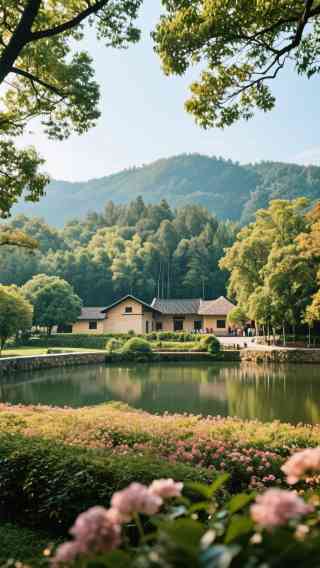
Former Residence Of Peng Dehuai.
7. The “Golden Triangle” of Revolutionary Sites
The Former Residence of Peng Dehuai is part of the historical “golden triangle” of revolutionary sites in Hunan, along with the homes of Mao Zedong and Liu Shaoqi. Exploring these interconnected sites offers a comprehensive understanding of the revolutionary movements that shaped modern China.
Practical Information
- Location: Wushi Town, Xiangtan County, Hunan Province, China
- Opening Hours: Daily from 9:00 AM to 5:00 PM (last entry at 4:30 PM)
- Admission: Free entry
- Recommended Visit Duration: 2-3 hours
Getting There
Buses frequently operate from Xiangtan West Bus Station to the memorial park, making it easily accessible for travelers.

Former Residence Of Peng Dehuai.
Embarking on a visit to the Former Residence of Peng Dehuai not only enriches your understanding of Chinese history but also allows you to appreciate the cultural significance of this remarkable figure in a tranquil setting. Don’t miss this opportunity to explore a vital piece of China’s revolutionary heritage.
Planning Your Visit: A Practical Guide
Discovering the Former Residence of Peng Dehuai: Your Essential Travel Guide
Nestled in the picturesque Wushi Town of Xiangtan County, Hunan Province, the Former Residence of Peng Dehuai offers a profound glimpse into the life of one of China’s most significant military leaders. As an international traveler interested in Chinese history and culture, your visit to this historic site will be both enlightening and memorable. Here’s everything you need to know to make the most of your experience.

Former Residence Of Peng Dehuai.
Getting There
Location:
The Former Residence of Peng Dehuai is located in Wushi Village, approximately 38 kilometers from the birthplace of Mao Zedong in Shaoshan and 65 kilometers from Liu Shaoqi’s residence. This area is often referred to as the “golden triangle” of revolutionary sites in Hunan.
Transportation:
– By Bus: Regular bus services operate from Xiangtan West Bus Station to the memorial park. The journey is convenient and offers a scenic view of the surrounding countryside.
– By Taxi: If you prefer a more direct route, taxis are available, but be sure to negotiate the fare beforehand or ask the driver to use the meter.
Admission Information
Entry Fee:
– Free Admission: Visitors can explore the Former Residence of Peng Dehuai without any entry fee, which makes it an accessible cultural experience.
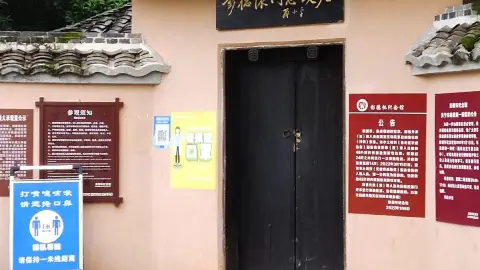
Former Residence Of Peng Dehuai.
Opening Hours:
– Daily: 9:00 AM – 5:00 PM (Last admission at 4:30 PM)
What to Expect
The site comprises several key attractions that reflect Peng Dehuai’s legacy:
- The Former Residence: Originally built in 1925 and known as “Sanhua Hall,” this traditional folk house offers insights into Peng’s humble beginnings and his path to becoming a prominent figure in Chinese military history.
- Peng Dehuai Memorial Hall: This hall celebrates the life and achievements of Peng, providing context to his role in significant historical events such as the Korean War and the Chinese Civil War.
- Statue of Peng Dehuai: A striking bronze statue honors his contributions and stands as a reminder of his enduring legacy.
- The Ancestral Temple and Graves of Martyrs: These sites deepen the visitor’s understanding of the cultural and historical significance of the area.
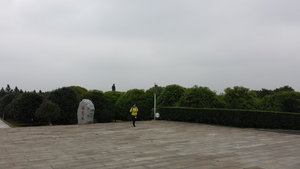
Former Residence Of Peng Dehuai.
Recommended Itinerary
To fully appreciate the significance of the Former Residence of Peng Dehuai, allocate about 2-3 hours for your visit. Here’s a suggested itinerary:
- Begin at the Memorial Hall: Start with an overview of Peng’s life and contributions. Take your time to read through the exhibits that highlight his military strategies and political philosophies.
- Explore the Former Residence: Walk through the traditional architecture and imagine the life of Peng Dehuai as a young man in this modest setting.
- Visit the Statue: Capture some photos with this iconic representation of a revered leader.
- Reflect at the Ancestral Temple: Take a moment to appreciate the historical significance of this site and honor the memory of martyrs commemorated here.
Travel Tips
- Language: While some signs may be in English, learning a few basic Mandarin phrases can enhance your experience. Locals appreciate when visitors make an effort to communicate in their language.
- Photography: Be mindful of any restrictions regarding photography, especially in memorial areas.
- Weather Considerations: Hunan can be humid, especially in summer. Dress comfortably and consider bringing an umbrella or raincoat if visiting during the rainy season.
Conclusion
Visiting the Former Residence of Peng Dehuai is not just an exploration of a historical site; it’s an opportunity to engage with the rich tapestry of China’s revolutionary past. From the insights gained in the memorial hall to the serene ambiance of the residence, your time here will undoubtedly deepen your understanding of Chinese history and culture. Prepare to be inspired by the legacy of a true military leader who shaped the course of modern China.
Tickets: Prices, Booking, and Tips
Visiting the Former Residence of Peng Dehuai offers travelers a unique glimpse into Chinese history, particularly the life of one of the country’s prominent military leaders. Here’s everything you need to know about accessing this significant cultural site.
Admission Details
-
Entry Fee: Admission to the Former Residence of Peng Dehuai is free, making it an accessible destination for all visitors.
-
Opening Hours: The site is open daily from 9:00 AM to 5:00 PM. Please note that the last admission is at 4:30 PM, so plan your visit accordingly.
Suggested Duration
- Visiting Time: Allocate 2 to 3 hours for your visit. This will allow you to explore the residence, memorial hall, and surrounding areas at a leisurely pace while absorbing the rich historical context.
Booking Information
- Although entry is free, it’s recommended to check for any special events or guided tours that may require advance booking. You can inquire about these services by calling the site at +86-731-57838100.
Getting There
-
Location: The residence is situated in Wushi Town, Xiangtan County, Hunan, approximately 38 km from Mao Zedong’s birthplace in Shaoshan.
-
Transport Options: Local buses frequently run from Xiangtan West Bus Station to the memorial park. Make sure to check the bus schedules for the latest information.
Tips for a Smooth Visit
-
Plan Ahead: Given the historical significance of the site, weekends and public holidays might see an influx of visitors. Arriving early in the day can enhance your experience.
-
Dress Comfortably: Wear comfortable clothing and shoes, as you may want to walk around the grounds and explore the various memorials, including the bronze statue of Peng Dehuai and his tomb.
-
Photography: While photography is generally allowed, be respectful of the site and its significance during your visit.
-
Learn the History: To enrich your experience, consider reading up on Peng Dehuai’s life and contributions before your visit. Understanding his role in Chinese history will provide a deeper appreciation of the site.
With its captivating history and serene surroundings, the Former Residence of Peng Dehuai is a must-visit for anyone interested in the profound narratives of China’s past. Enjoy your journey into history!
How to Get There: A Complete Transportation Guide
Getting to the Former Residence of Peng Dehuai
The Former Residence of Peng Dehuai, located in Wushi Town, Xiangtan County, Hunan Province, is a significant site for those interested in Chinese history and culture. Whether you are arriving from a major city or exploring the local area, here’s your complete guide to transportation options for visiting this historic site.
1. Arriving by Air
If you’re flying into China, the nearest major airport is Changsha Huanghua International Airport (CSX), located approximately 70 kilometers (about 43 miles) from Xiangtan. Here’s how to proceed from the airport:
- Taxi: A taxi ride from the airport to the Former Residence will take around 1.5 hours. Expect to pay between 200-300 CNY depending on traffic and your driver’s route.
- Airport Shuttle: Take a shuttle bus to Changsha’s city center and then transfer to a long-distance bus to Xiangtan.
2. Getting to Xiangtan
From Changsha, there are several options to reach Xiangtan:
- Train: High-speed trains frequently run from Changsha South Railway Station to Xiangtan Railway Station. The journey takes about 30-40 minutes. Once you arrive, you can take a taxi to the residence, which is approximately 25 kilometers away.
- Bus: Buses from Changsha’s West Bus Station to Xiangtan operate regularly and take about 1-1.5 hours. This is a more budget-friendly option, with fares typically around 30 CNY.
3. Local Transportation in Xiangtan
Once you’re in Xiangtan, here’s how to get to the Former Residence of Peng Dehuai:
- Public Bus: Local buses go directly to Wushi Town, where the residence is located. Look for buses heading to Wushi Peak or the Peng Dehuai Memorial Park. The bus fare is usually minimal, around 5 CNY.
- Taxi: Taxis are readily available in Xiangtan. A taxi ride from Xiangtan Railway Station to the residence will cost approximately 40-60 CNY and take about 30 minutes.
- Ride-Sharing Apps: Services like Didi Chuxing (similar to Uber) can be a convenient way to travel around Xiangtan at reasonable rates.
4. Admission and Opening Hours
The Former Residence of Peng Dehuai is open daily from 9:00 AM to 5:00 PM, with the last admission at 4:30 PM. Admission is free, allowing you to explore the rich history and heritage of this important figure without a financial barrier.
5. Recommended Duration of Visit
Plan to spend 2-3 hours at the site. This will give you ample time to explore the residence, the memorial hall, and the various exhibits detailing Peng Dehuai’s life and contributions to Chinese history.
Final Tips
- Language: Although the local population may not speak extensive English, using translation apps can greatly assist in communication.
- Local Cuisine: Don’t miss the chance to sample Hunan cuisine. There are local restaurants near the residence that offer delicious and authentic dishes.
- Respect Local Customs: As with any historical site, be respectful of the cultural significance and the memorials present.
With this guide, you are well-equipped to embark on your journey to the Former Residence of Peng Dehuai, where you can immerse yourself in the rich tapestry of Chinese revolutionary history. Enjoy your visit!
Local Cuisine and Accommodation Nearby
Exploring the Former Residence of Peng Dehuai in Xiangtan offers not only a deep dive into Chinese history but also a taste of local culture through its cuisine and accommodations. Nestled in the picturesque Hunan Province, this region is renowned for its vibrant flavors and warm hospitality. Here’s a guide to savoring the local culinary delights and finding a comfortable stay nearby.
Local Cuisine
Hunan Cuisine
Hunan Province is famous for its spicy and bold flavors, characterized by the liberal use of chili peppers, garlic, and shallots. When visiting the area, be sure to try:
- Spicy Steamed Fish (剁椒鱼头): A signature dish featuring fish head steamed with a spicy chili sauce, showcasing the region’s love for heat.
- Stir-Fried Lamb with Cumin (孜然羊肉): Tender lamb stir-fried with fragrant cumin and spices, this dish is a must-try for meat lovers.
- Hunan Pickles (湖南泡菜): A variety of pickled vegetables that provide a tangy accompaniment to many dishes, offering a refreshing balance to the spiciness.
- Smoked Meat (腊肉): Often served with vegetables, smoked pork is a traditional staple that reflects the local preservation methods.
Dining Recommendations
– Xiangtan Local Cuisine Restaurant (湘潭地方菜馆): Located near the memorial site, this restaurant serves authentic Hunan dishes in a casual setting. Don’t miss their spicy duck and bamboo shoots.
– Wushi Town Snack Street (乌石镇小吃街): A lively area filled with street food stalls offering everything from spicy skewers to freshly made dumplings. It’s an excellent place for a quick bite and local ambiance.
Accommodation Nearby
Comfortable Stays
To complement your historical exploration, several accommodations provide a blend of comfort and local charm:
-
Xiangtan Grand Hotel (湘潭大酒店): Just a short drive from the Former Residence, this hotel offers modern amenities, spacious rooms, and a restaurant serving local cuisine. Perfect for travelers seeking convenience and comfort.
-
Wushi Peak Guesthouse (乌石峰宾馆): For a more intimate experience, this guesthouse offers cozy rooms with a homely atmosphere. The owners are known for their hospitality and can provide insights into local attractions.
-
Hunan Provincial Hotel (湖南省酒店): A popular choice among tourists, this hotel features comfortable accommodations and is strategically located for easy access to both the memorial and local eateries.
Experience the Local Culture
Engaging with the local cuisine and finding the right accommodation enhances your visit to the Former Residence of Peng Dehuai, allowing you to immerse yourself in the rich tapestry of Hunan’s history and culture. Whether you indulge in the spicy dishes of Hunan or rest in comfort, your journey through this historical landscape promises to be both enriching and delightful.
Frequently Asked Questions
Frequently Asked Questions about the Former Residence of Peng Dehuai
1. What is the Former Residence of Peng Dehuai?
The Former Residence of Peng Dehuai, known as 彭德怀故居 (Péng Déhuái Gùjū), is a historic site located in Wushi Town, Xiangtan County, Hunan Province, China. Built in 1925 and originally named Sanhua Hall, it was the home of the prominent military leader and Defense Minister of China, Peng Dehuai. The site includes traditional folk houses, a memorial hall, a bronze statue of Peng, and the graves of martyrs, showcasing his life and contributions to Chinese history.
2. How do I get to the Former Residence of Peng Dehuai?
The site is accessible by public transportation. Buses regularly run from Xiangtan West Bus Station to the memorial park. It is located approximately 38 kilometers from Mao Zedong’s birthplace and is part of a significant ‘golden triangle’ of revolutionary sites in Hunan.
3. What are the opening hours and admission fees?
The Former Residence of Peng Dehuai is open daily from 9:00 AM to 5:00 PM, with the last admission at 4:30 PM. Admission to the site is free, allowing visitors to explore without cost.
4. What can I expect to see at the site?
Visitors can explore the traditional architecture of the residence, the Peng Dehuai Memorial Hall, and the surrounding memorial park. Key highlights include:
– The bronze statue of Peng Dehuai
– The Ancestral Temple (易华祠)
– Graves of Martyrs
– Exhibits detailing Peng’s life and military contributions
5. Is there a recommended visiting time?
It is advisable to allocate 2 to 3 hours for your visit. This timeframe allows you to fully appreciate the exhibits, take photographs, and enjoy the tranquil environment of the memorial park.
6. Is the site suitable for families and children?
Yes! The Former Residence of Peng Dehuai is family-friendly. The park-like setting provides a peaceful environment for families to explore, and the historical context can be educational for children interested in Chinese history.
7. Are there any amenities available on-site?
While the site primarily focuses on historical exhibits, basic amenities such as restrooms may be available. Visitors should consider bringing snacks or drinks, especially if visiting during peak hours, as dining options nearby may be limited.
8. What is the significance of Peng Dehuai in Chinese history?
Peng Dehuai (1898-1974) was a key military commander during pivotal events in Chinese history, including the Second Sino-Japanese War and the Korean War. He was known for his forthrightness and dedication to the Communist Party of China. His legacy has evolved over the years; after being criticized during the Cultural Revolution, he was rehabilitated in the 1980s, and today he is revered for his contributions to the country. The residence serves as a testament to his life and values, making it an important site for understanding modern Chinese history.
Final Thoughts on Your Trip
As you prepare to leave the Former Residence of Peng Dehuai, take a moment to reflect on the profound sense of history and cultural significance that envelops this remarkable site. Nestled in the serene surroundings of Wushi Town, Xiangtan, this former residence not only commemorates the life of one of China’s most distinguished military leaders but also serves as a testament to the resilience and spirit of the Chinese people.
A Journey Through Time
Visiting Peng Dehuai’s Former Residence offers an unparalleled glimpse into the life of a man who played a pivotal role in shaping modern China. From his humble beginnings to his rise as a prominent figure during critical moments in Chinese history, Peng’s story is interwoven with the narrative of the nation itself. As you wander through the memorial hall, observe the bronze statue, and explore the beautifully maintained grounds, you can almost hear the echoes of the past, resonating with tales of courage, dedication, and transformation.
Embrace the Cultural Richness
This site is not only a tribute to Peng Dehuai but also a part of the “golden triangle” of revolutionary history in Hunan, alongside the revered sites of Mao Zedong and Liu Shaoqi. By visiting, you are stepping into a broader context of China’s revolutionary heritage, making your trip a rich tapestry of cultural exploration.
Practical Insights
- Admission: Enjoy free entry, allowing you to immerse yourself without the worry of ticket prices.
- Visiting Hours: The residence is open from 9:00 AM to 5:00 PM, with the last admission at 4:30 PM. Allocate 2-3 hours to fully appreciate the exhibits and grounds.
- Accessibility: Easily reachable by public transport, the site welcomes travelers from all corners of the globe.
Final Reflections
As you conclude your visit, let the spirit of Peng Dehuai inspire you. His life reminds us of the power of perseverance and the importance of standing up for one’s beliefs. Whether you are a history enthusiast or a casual traveler, the Former Residence of Peng Dehuai offers a unique opportunity to connect with China’s rich past and understand the narrative of its people.
Take with you not just memories but a deeper appreciation for the complexities of history and the enduring legacies that shape our world today. Safe travels on your journey through the vast and fascinating landscapes of China!